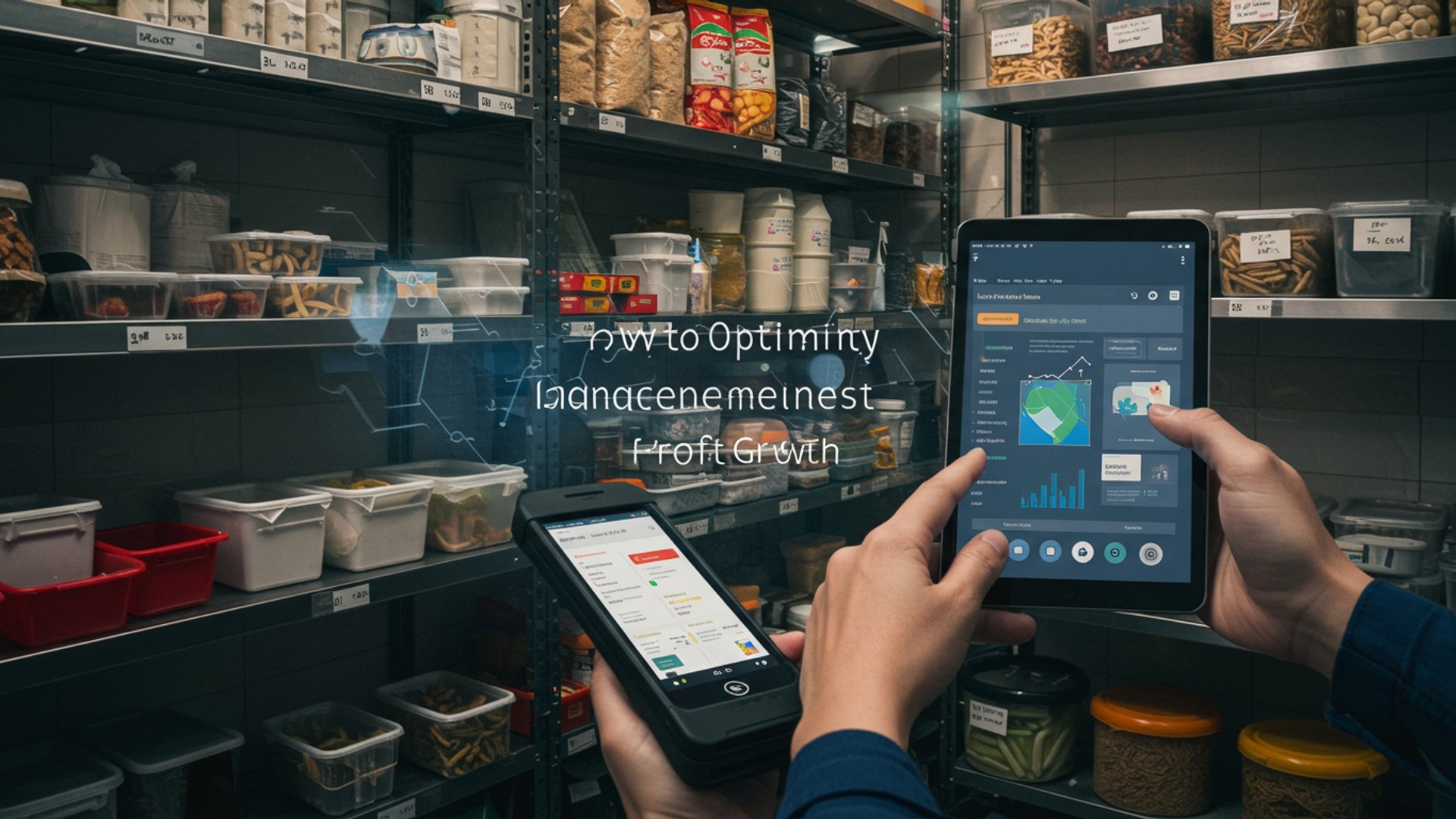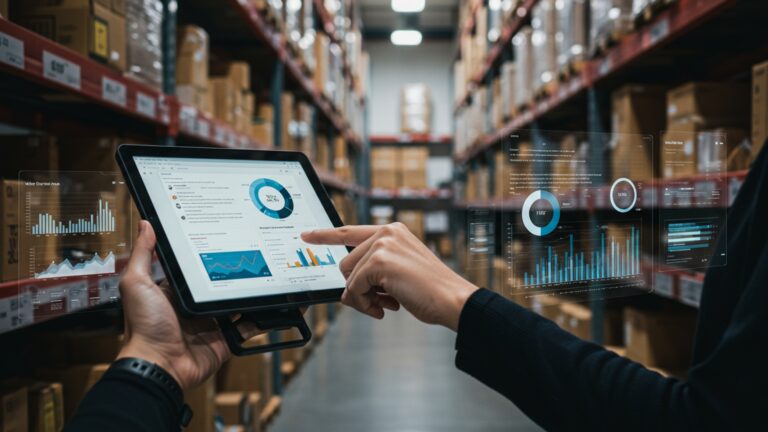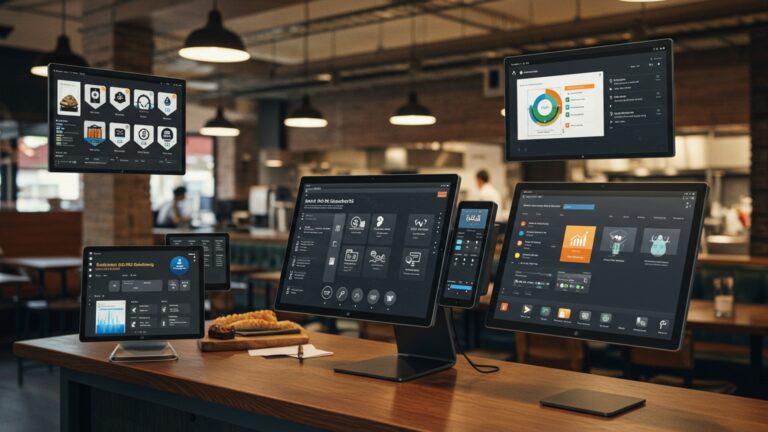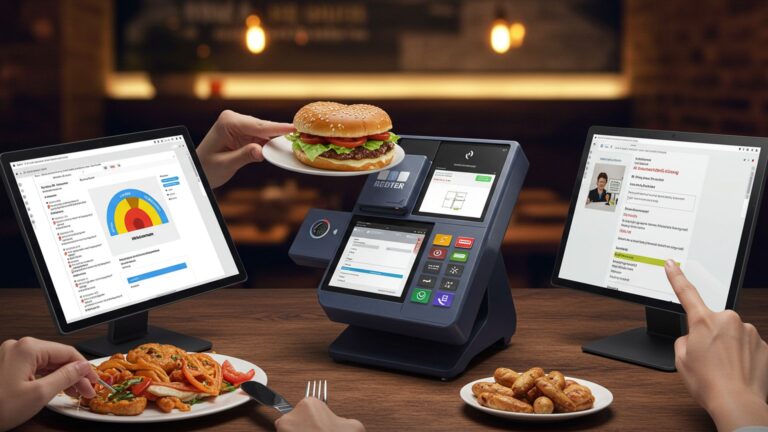How to Optimize Inventory Management POS India for Profit Growth
Indian businesses, from bustling kiranas to expanding e-commerce ventures, frequently struggle with inventory inefficiencies that severely impact profit margins. In a market witnessing a significant 23% e-commerce growth last year, effective inventory management POS India solutions are crucial, not merely optional. Imagine a Delhi electronics store reducing carrying costs by 18% and virtually eliminating stockouts by leveraging real-time data; such precise control ensures optimal stock levels. This strategic optimization prevents costly overstocking of slow-moving items and avoids lost sales from unavailable popular products, directly enhancing operational efficiency and accelerating revenue growth.

The Crucial Role of Integrated Inventory Management and POS in India
In today’s fast-paced retail and business landscape, particularly within the dynamic Indian market, optimizing operations is not just an advantage—it’s a necessity for survival and growth. At the heart of efficient operations lies effective inventory management, seamlessly integrated with a Point of Sale (POS) system. But what exactly do these terms mean. why is their synergy so vital?
- Inventory Management
- Point of Sale (POS) System
At its core, inventory management is the systematic process of sourcing, storing. selling a company’s inventory. This includes raw materials, components. finished products. The goal is to ensure the right stock is available at the right time, in the right quantity, at the right place. at the right cost. Effective inventory management prevents stockouts (lost sales) and overstocking (increased carrying costs).
A POS system is the central hub where retail transactions are completed. Beyond just processing sales, modern POS systems handle various aspects like customer management, sales reporting, employee management. crucially, inventory tracking. When we talk about
Inventory management POS India
, we’re referring to an integrated solution tailored to the unique demands of the Indian retail ecosystem.
The integration of these two systems means that every sale recorded at the POS terminal automatically updates the inventory count. This real-time data flow is invaluable, especially in India, where diverse consumer preferences, regional festivals. varying supply chain efficiencies demand precise control over stock levels. Without this integration, businesses often grapple with discrepancies, leading to lost sales, wasted resources. a significant dent in profitability.
Navigating the Unique Challenges of Inventory Management in India
India presents a fascinating, yet complex, environment for inventory management. Businesses here often face a unique set of challenges that can significantly impact their bottom line if not addressed proactively. Understanding these hurdles is the first step towards optimization:
- Diverse Product Lines & Seasonal Demand
- Logistical Complexities
- Manual Errors & Inefficiencies
- GST Compliance
- Pilferage and Shrinkage
From fashion and electronics to groceries and handicrafts, Indian businesses often manage an incredibly diverse range of products. This diversity is compounded by highly seasonal demand patterns, driven by numerous festivals (Diwali, Eid, Christmas, etc.) , regional events. even monsoon seasons, making accurate forecasting a significant challenge.
India’s vast geography, varying infrastructure quality. regional supply chain nuances can make product movement challenging. Delays in transit, damage. pilferage are real concerns that directly impact inventory availability and costs.
Many smaller and even some medium-sized businesses still rely on manual stock-taking and record-keeping. This approach is highly prone to human error, leading to inaccurate stock counts, misplacements. inefficient ordering.
The Goods and Services Tax (GST) regime in India requires meticulous record-keeping for every transaction, impacting purchase, sales. returns. An unoptimized inventory system can make GST compliance a nightmare, potentially leading to penalties.
Unfortunately, stock shrinkage due to theft (internal or external), damage, or administrative errors remains a persistent problem for many Indian retailers. Without robust tracking, these losses can go unnoticed for extended periods.
Traditional, siloed approaches to inventory and sales management are simply inadequate to tackle these complexities. They lead to reactive decisions, missed opportunities. ultimately, eroded profits. This is precisely where a robust
Inventory management POS India
system proves its worth, offering a centralized, intelligent solution to these widespread issues.
Essential Features of an Optimized Inventory Management POS System for India
To effectively combat the challenges and capitalize on opportunities in the Indian market, a modern inventory management POS system must offer a comprehensive suite of features. Here are the key functionalities that every Indian business should look for:
- Real-time Inventory Tracking
- Multi-Location & Warehouse Support
- Vendor Management & Purchase Order Automation
- Detailed Reporting & Analytics
This is non-negotiable. The system must update stock levels instantly with every sale, return, or receipt of new goods. This provides an accurate, up-to-the-minute view of what’s on hand across all locations.
For businesses with multiple stores or warehouses, the system should allow centralized management of inventory across all locations, enabling stock transfers and consolidated reporting.
Streamline the procurement process by managing vendor details, automating purchase order generation based on reorder levels. tracking incoming shipments.
A powerful
Inventory management POS India
solution provides insights into sales trends, best-selling products, slow-moving items, inventory turnover rates. profit margins. This data is crucial for informed decision-making.
Speeds up checkouts, stock receiving. inventory audits while significantly reducing human error.
The system should seamlessly integrate with other crucial business tools like accounting software (e. g. , Tally for India), e-commerce platforms. customer relationship management (CRM) systems.
Efficiently process customer returns and exchanges, ensuring inventory levels are adjusted correctly and customer satisfaction is maintained.
Allows business owners and managers to monitor inventory, sales. reports from anywhere, anytime, using a smartphone or tablet. Cloud-based systems offer scalability and reduce IT infrastructure costs.
Crucially for India, the system must be capable of handling GST calculations, invoicing. reporting requirements accurately.
Essential for businesses dealing with perishable goods (food, pharmaceuticals) to manage stock rotation and minimize waste.
Strategic Optimization for Profit Growth with Inventory Management POS India
Having a capable
Inventory management POS India
system is only half the battle; the real profit growth comes from strategically leveraging its capabilities. Here are actionable strategies:
- Accurate Demand Forecasting
- Implement ABC Analysis
- A-items
- B-items
- C-items
- Adopt Just-in-Time (JIT) Inventory
- Calculate Economic Order Quantity (EOQ)
- Optimize Vendor Relationships
- Regular Stock Audits & Reconciliation
- Monitor Key Performance Indicators (KPIs)
Utilize the historical sales data from your POS system to predict future demand. Look for trends, seasonality. promotional impacts. Advanced systems can even use AI/ML for more sophisticated forecasts. This minimizes both overstocking and stockouts.
Categorize your inventory based on its value and importance.
High-value, low-volume (e. g. , premium electronics). Manage these tightly with frequent checks.
Medium-value, medium-volume (e. g. , popular apparel). Manage with moderate attention.
Low-value, high-volume (e. g. , basic groceries). Can be managed with looser controls.
Focus your management efforts where they yield the most return.
For certain product categories, aim to receive goods only as they are needed for sale. This minimizes carrying costs and reduces waste. Your POS system’s real-time data helps identify when to reorder, making JIT feasible.
Use the system’s data to determine the optimal order quantity that minimizes total inventory costs (ordering costs + holding costs). While a formula, many systems can aid in calculating this.
Leverage purchase history and supplier performance data from your system to negotiate better terms, discounts. delivery schedules with vendors. A reliable supply chain is key.
Even with automated systems, periodic physical counts are essential to reconcile actual stock with system records. This helps identify discrepancies, address shrinkage. maintain data accuracy.
Regularly track metrics like inventory turnover ratio, stock-to-sales ratio, gross margin return on investment (GMROI). stockout rate. Your POS system’s reporting features are invaluable here.
Real-World Applications and Benefits: A Case Study Perspective
To illustrate the tangible benefits of an optimized
Inventory management POS India
system, let’s consider the hypothetical case of “Bharat Electronics,” a growing chain of consumer electronics stores across five major Indian cities.
Bharat Electronics was struggling with inconsistent stock levels. One store would have an excess of a popular smartphone model, while another would face a stockout, leading to lost sales and frustrated customers. Manual inventory checks were time-consuming, error-prone. provided outdated details. They also faced challenges with warranty tracking and managing product returns across different branches.
Bharat Electronics implemented a cloud-based Inventory Management POS system tailored for the Indian market. Key features included:
- Real-time multi-location inventory synchronization.
- Automated purchase order generation based on predefined reorder points.
- Integrated barcode scanning for fast receiving and sales.
- Comprehensive sales and inventory analytics dashboards.
- GST-compliant invoicing and reporting.
- Reduced Stockouts by 40%
- Lowered Carrying Costs by 15%
- Improved Operational Efficiency
- Enhanced Customer Satisfaction
- Streamlined GST Compliance
- Better Decision-Making
By having real-time visibility, store managers could quickly identify low-stock items and initiate inter-store transfers or new purchase orders proactively, ensuring popular models were always available.
The system’s analytics helped identify slow-moving products, allowing Bharat Electronics to implement targeted promotions to clear old stock and optimize ordering for new inventory, reducing storage and insurance costs.
What once took days of manual counting now takes hours with barcode scanning. Employee time was reallocated from mundane tasks to customer service and sales.
Customers were no longer turned away due to unavailable products. The ability to quickly check stock at other branches or the central warehouse and arrange delivery significantly improved the shopping experience.
Automated invoicing and reporting capabilities simplified tax filings, ensuring accuracy and avoiding potential penalties.
Management gained access to detailed reports on sales performance by product, category. store, enabling data-driven decisions on product assortment, pricing. marketing strategies.
This case exemplifies how a well-implemented and optimized Inventory management POS India system transforms business operations from reactive to proactive, directly contributing to substantial profit growth and competitive advantage.
Choosing the Right Inventory Management POS Solution for Your Indian Business
Selecting the ideal
Inventory management POS India
solution is a critical decision that can significantly impact your business’s future. With numerous options available, it’s essential to evaluate them against your specific needs and the unique demands of the Indian market. Here’s a guide to help you make an informed choice:
- Scalability
- Cost-Effectiveness
- Ease of Use & Training
- Customer Support
- Customization & Flexibility
- Security
- Local Compliance
Choose a system that can grow with your business. If you plan to open more stores or expand your product range, ensure the POS can handle increased transaction volumes and additional inventory locations without a complete overhaul.
Consider not just the initial purchase price but also ongoing subscription fees, maintenance, support. potential hardware upgrades. Cloud-based solutions often have lower upfront costs but recurring monthly fees.
The system should be intuitive for your staff to learn and use. A complex system will lead to errors and resistance from employees. Look for user-friendly interfaces and comprehensive training resources.
Robust and responsive local support is crucial. Ensure the vendor offers support channels (phone, email, chat) and has a good reputation for resolving issues quickly, ideally with support staff who interpret the Indian business context.
Your business might have unique workflows or reporting requirements. Can the system be customized to fit these needs? Some solutions offer modular add-ons for specific industry requirements.
Data security is paramount. Ensure the system employs strong encryption, regular backups. compliance with data protection standards to safeguard your sales, customer. inventory data.
Confirm that the software fully supports Indian tax regulations (GST), invoicing formats. payment gateway integrations relevant to your region.
Comparison: Cloud-Based vs. On-Premise POS Systems
When selecting a POS system, you’ll generally encounter two main deployment models. Understanding their differences is key:
| Feature | Cloud-Based POS System | On-Premise POS System |
|---|---|---|
| Data Storage | Data stored on remote servers, accessible via internet. | Data stored on local servers within your business premises. |
| Accessibility | Access from anywhere, anytime, on multiple devices (mobile, tablet, PC). | Access typically limited to the physical location of the server, or via complex VPN setups. |
| Upfront Cost | Generally lower (subscription model, minimal hardware). | Higher (server hardware, software license, installation). |
| Ongoing Cost | Monthly/annual subscription fees, often includes updates & support. | Maintenance, IT staff, software updates, potential server replacements. |
| Updates & Maintenance | Managed by the vendor, automatic updates. | Requires manual updates, often by in-house IT or third-party contractors. |
| Scalability | Highly scalable; easy to add new users, locations, or features. | Scalability can be complex and expensive; requires hardware upgrades. |
| Data Security | Vendor responsible for security, often with robust measures. Requires internet. | Business responsible for security, can operate offline. |
| Internet Dependency | Requires stable internet connection for full functionality (some offer offline mode). | Less dependent on internet. remote access needs it. |
For most modern Indian businesses, especially those looking for flexibility, scalability. reduced IT overhead, cloud-based Inventory management POS India solutions are often the preferred choice. They offer the agility needed to adapt to rapid market changes and provide real-time insights across distributed operations.
Implementing and Maximizing Your Inventory Management POS System
Once you’ve chosen the right
Inventory management POS India
solution, successful implementation and ongoing optimization are crucial for realizing its full profit-boosting potential. It’s not just about installing software; it’s about integrating it into your daily operations and culture.
- Phased Implementation Strategy
- Start with core sales processing and basic inventory tracking at one location.
- Once stable, expand to full inventory features (purchase orders, returns).
- Gradually roll out to other locations, if applicable.
- Comprehensive Staff Training
- Provide hands-on training sessions.
- Create user manuals or quick-reference guides.
- Designate a “super-user” or internal expert for ongoing support.
- Accurate Initial Data Entry
- Continuous Monitoring and Adjustment
- Identify slow-moving items and adjust ordering.
- Spot popular products and ensure adequate stock.
- Refine reorder points and safety stock levels based on actual performance.
- Leverage Advanced Features
- Regular Software Updates
- Data Security Best Practices
- Use strong, unique passwords for all user accounts.
- Implement role-based access control, limiting what each employee can do.
- Regularly backup your data, especially if using an on-premise solution.
Don’t try to switch everything overnight. Consider a phased approach.
This allows for adjustments and minimizes disruption.
Your system is only as good as the people using it. Invest in thorough training for all employees who will interact with the POS—from sales associates to inventory managers.
Ensure they interpret not just how to use it. why it’s essential for their roles and the business.
The foundation of any inventory system is accurate data. Before going live, ensure all product insights, initial stock counts, vendor details. pricing are meticulously entered. Errors here will propagate throughout the system.
The retail landscape is constantly evolving. Regularly review your inventory reports, sales data. KPIs.
The system provides the data; your team must use it to make continuous improvements.
As your team becomes comfortable with the basics, explore and implement more advanced features like batch tracking, expiry date management, multi-currency support (if applicable), or loyalty programs. These can unlock further efficiencies and revenue streams.
Keep your POS software updated to the latest version. Updates often include bug fixes, security enhancements, new features. compliance adjustments (e. g. , for GST changes), ensuring your system remains robust and relevant.
Even with a secure cloud provider, internal security practices are vital.
By treating your Inventory management POS India system as a strategic asset and continuously refining its use, businesses can achieve sustainable profit growth, enhance operational efficiency. gain a significant competitive edge in the bustling Indian market.
Conclusion
Optimizing inventory management through a robust POS system in India isn’t merely an operational task; it’s a direct pathway to substantial profit growth. We’ve seen how real-time sales data, precise demand forecasting—especially vital during India’s dynamic festive seasons or the bustling wedding rushes—and automated reordering can radically transform your business. From my own observations, businesses, whether a local kirana store adapting to digital payments or a multi-branch apparel chain, have dramatically reduced carrying costs and eliminated frustrating stockouts by embracing these tools. My personal tip? Regularly audit your top 20% and bottom 20% selling items; this focused insight, coupled with modern POS features like predictive analytics, will sharpen your stock strategy. Embrace this digital evolution. watch your Indian enterprise not just survive. truly flourish with enhanced profitability.
More Articles
Learn 8 Smart Inventory Control Strategies Using POS in India
How to Implement POS Software for Seamless Sales and Inventory Management
How to Master Billing and POS Software for Efficient Retail Management
Learn How to Choose the Best POS Software for Your Grocery Store
7 Essential Features Your Clothing Store POS Software in India Needs
FAQs






